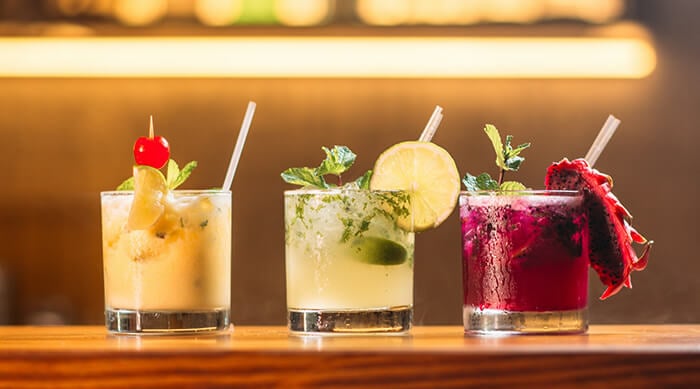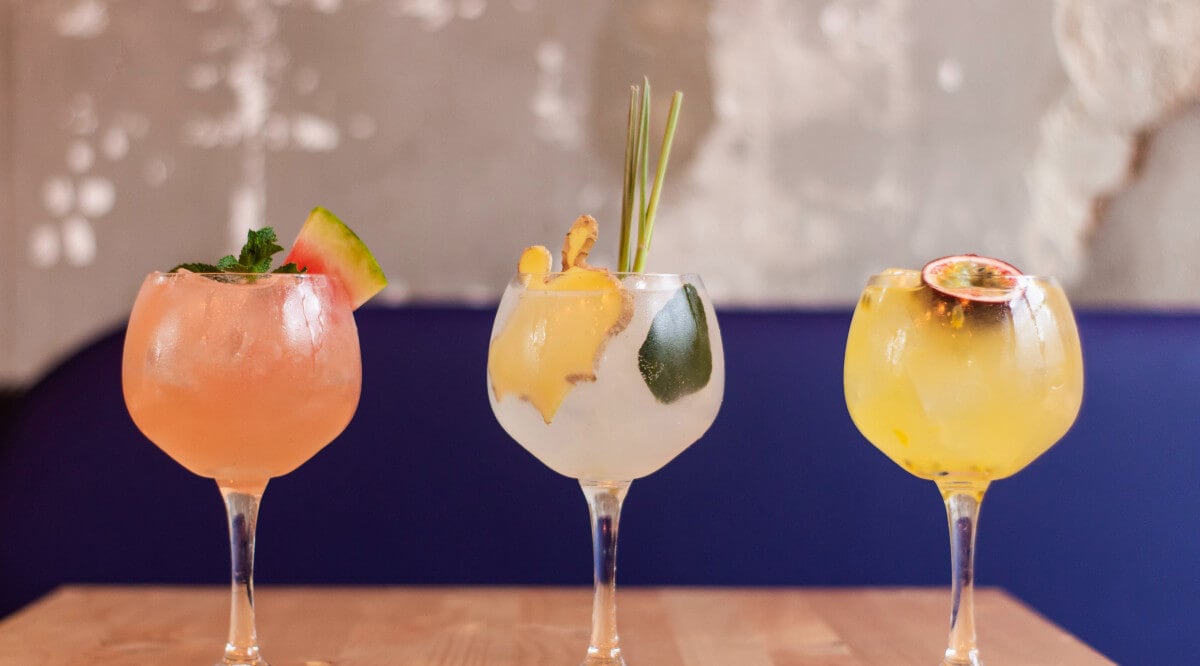The popularity of non-alcoholic drinks continues to rise. That may be thanks to the growth of the sober curious movement, consumers seeking healthier alternatives, or just because these booze-free options are just plain tasty.
Alcohol-removed wines are part of that trend, but the science behind how to remove alcohol from wine can get complicated. It can also get a little complex when determining whether you’re purchasing a quality product. There are a lot of choices out there.
If you’re looking for a high-quality dealcoholized wine, you’ll want to look for one key step in the process: the best alcohol-removed wines start as fermented wine.
Does boiling wine remove the alcohol?
Boiling wine removes much of the alcohol in that wine, affecting its taste. Non-alcoholic wine brands that use heat to remove the alcohol in their wines do so very carefully, making sure not to cook the wine.
That’s hard to do at home.
How long does it take alcohol to evaporate out of wine? It can take over 2 hours for most of the alcohol to evaporate out of wine if you’re using boiling as a method.
The U.S. Department of Agriculture found that even after 2 ½ hours of simmering at 185 degrees Fahrenheit, a burgundy wine still retained 4-6% of its ethanol content. The study also found that leaving a dish to sit overnight will cause natural alcohol evaporation.
If you’re just interested in burning off the alcohol in a dish for cooking purposes, hotter temperatures and a larger surface area will burn off more alcohol more efficiently. If you’re seeking an authentic dealcoholized wine, though, it’s best to leave it to the experts.
How is non-alcoholic wine made?
True non-alcoholic wine starts as a fully fermented wine. It goes through all of the steps a winemaker would take to create a delicious bottle of wine, including fermentation and aging.
Dealcoholized wine brands that skip that process are more similar to grape juice than your favorite white wine.
A few unique processes remove the alcohol content after the fact, resulting in a product that tastes like a quality wine. These options will result in an ABV no higher than 0.5%, the threshold to be considered a non-alcoholic wine in the United States.
That makes it a safe alternative for those seeking to cut back on alcohol or looking for safe drinks during pregnancy.
Remember that thanks to natural fermentation, you can find a trace amount of alcohol in places you might not expect, like orange juices and bananas.
How long does it take to remove alcohol from wine? How long it takes to remove alcohol from wine depends on the method and the winemaker. Allowing wine to reach its boiling point is the most efficient way to remove the alcohol content, but this will affect the taste of the wine.
The processes we’ll describe here often come with multiple steps. Each method intends to retain the wine flavor, which isn’t accessible if you don’t have the equipment.
Reverse Osmosis
Reverse osmosis is growing in popularity as a preferred dealcoholization method for alcohol-removed wine brands. The science behind the technique relies on the complex properties of wine and a unique filtration process.
In reverse osmosis, the fermented wine is pushed against a semipermeable membrane with tiny pores. The components of the wine that pass through that tight filter are smaller in size and lower in weight. Alcohol and water both pass the membrane test at this phase.
More significant compounds found in wine won’t pass through the filter. These include the phenolic acids that affect the mouthfeel of a wine and other desirable wine traits and aromas that result in a high-quality pour.
Those compounds can be added back to the wine once the alcohol is removed or tweaked somewhat depending on the vintner’s desired result.
The mixture at this point is a highly concentrated wine with an alcohol by volume (ABV) below 0.5%. The water separated at the start of the process is then added back to this mixture, blending with those chemical compounds that never made it through the filter.
Vacuum Distillation
Vacuum distillation, or thermal distillation, also uses heat to remove the alcohol from wine, but the process happens in a vacuum chamber. There are two phases to the method.
In the wine’s first pass through the chamber, any compounds that may be volatile or affected in the process are removed. Those compounds can be reintroduced later to return flavor and aroma to the wine.
The wine then goes through a second pass through the chamber to remove the alcohol.
Unlike DIY methods where you may end up cooking the wine, experts in vacuum distillation keep the temperatures as low as possible while still allowing that evaporation to happen. This saves some of the flavor and aromas in the wine from evaporating along with the alcohol.
This method typically uses steam instead of direct heat to better control desired temperatures. The temperature in those high-pressure chambers varies by winemaker, but it’s typically between 85-95 degrees Fahrenheit.
Spinning Cone Columns
Many winemakers in the United States prefer spinning cone technology to preserve more of the aromas of quality wine. In this method, the wine makes two passes through a centrifuge that includes both spinning and fixed cones.
The force of the spinning cones thins out the wine, stripping it of any compounds that are too volatile to stay behind after the first pass.
Like in vacuum distillation, those compounds include properties that add depth and flavor to the wine. In this process, they’re collected for later use once the alcohol is removed.
Dealcoholization happens in the second pass through the cones. This step occurs at a somewhat higher temperature, reducing the alcohol to where the vinter wants it. In the case of a dealcoholized wine, that would be at or below 0.5% ABV.
The compounds removed in the first pass are then returned to the wine to get the mixture as close as possible to its original form. The quality of wine a winemaker is starting with is vital to the finished product.
Studies show the process retains most of the beneficial compounds of the wine, including those healthy antioxidants found more often in red and rosé wines.
What to Avoid!
If you’ve been exploring the world of alcohol substitutes, you’ve likely found out all on your own that there are alcohol-free wines you won’t purchase again. We’ve come up with a few tips that could lead you to a better bottle of alcohol-removed wine:
- Read labels carefully. Look for words like “dealcoholized” or “alcohol-removed” on the bottle. The term “alcohol-free” can mean a wine hasn’t gone through the fermentation process, so what you’re buying may just be a sugary sweet grape juice alternative.
- Explore flavor profiles. As with any wine, alcohol-removed varieties come with different levels of acidity and tannins. If your chardonnay tastes sour, that can also reflect the grape selection. Less ripe grapes result in a lower alcohol level but a higher level of acidity.
- Trust your nose. The aromas coming off a dealcoholized wine should resemble a quality wine. If all you’re getting is sweetness, that’s likely what you’ll taste on your palate. Good alcohol-removed wine should smell as complex as it tastes.
- Treat it like regular wine. You can pair alcohol-removed wine with food and your favorite apps. You can serve it at a tasting or bridal shower. Good dealcoholized wine is just as versatile as a good wine with the alcohol intact.
- Do your research. Find brands that know the wine industry. These brands create products that taste like the real thing because they are the real thing. Seek out brands that have an understanding not only of dealcoholization methods but winemaking.
Surely’s wines are made from high-quality grapes grown by California wineries. We separate the alcohol from the wine using a precise filtration process that we’ve mastered to bring you a delicious product.
The result is a bottle — or can — of wine that still boasts the flavors you love in alcoholic wine. Add perks like our brand is low in calories, and you may never drink alcohol again.
Try a full-bodied pinot noir that boasts all of the health benefits of red wine without the alcohol. Mix up your Christmas cocktails with one of our sparkling varieties, like our crisp and refreshing non-alcoholic sparkling white.
We know you won’t miss the alcohol in our wines because we know our wine.
Sources
- Alcohol retention in food preparation
- Aroma Profile and Chemical Composition of Reverse Osmosis and Nanofiltration Concentrates of Red Wine Cabernet Sauvignon
- Dealcoholized wines by spinning cone column distillation: phenolic compounds and antioxidant activity measured by the 1,1-diphenyl-2-picrylhydrazyl method






